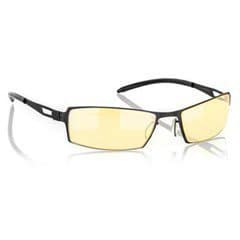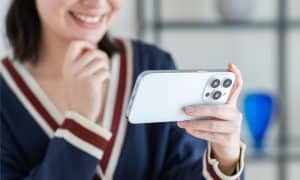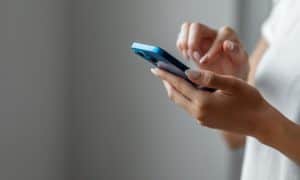

The solution, according to the experts, is to turn off the gadgets two or three hours before bedtime. Sounds nice. But if you’re like me, two or three hours before bedtime comprises the entirety of what’s left of the day after getting home from work, taking the dog out, putting the kid to bed and cleaning up after dinner. With that in mind, it sounds like the sleep experts are telling me to never use a smartphone or computer on a weeknight.
A sane person would accept this. A sane person would pick up a paperback book or a board game or take a walk or something. A sane person wouldn’t fight evolution, and would simply turn off the lights at nighttime and go to sleep.
But I know that’s not why you’re reading this blog post. You’re reading this blog post because you know there has to be a better way. There is.
Blue Screen of Death: Why Your iPad Keeps You Awake and How to Conquer It
Modern society has a knack for being persistently dumb to the point that experts accommodate our collective unwillingness to listen to reason. That’s why the Oxford English Dictionary is now redefining literally as a word that can be used “for emphasis rather than actually being true.” That’s right—up is the new down, 2 + 2 = 5 and “literally” means “figuratively.”
In the same vein, sleep researchers have leaked a useful tidbit of knowledge to us screen addicts. If we’re not going to turn off the screens at night (and we really, really aren’t), then the least we can do is turn down the blue light. While all bright artificial light feeds insomnia, researchers have found that blue light is the worst. Blue light is nature’s alarm clock in our circadian rhythm. This is because, as cavemen, we’d only be exposed to blue light during the day, when the sun was shining, and the sky was sparkling. So, we evolved to become alert and awake when exposed to blue light (nature’s alarm clock). Today, we are exposed to blue light long after the sun goes down from two omnipresent sources: computer screens and fluorescent bulbs.
While artificial light is not new to society, the amount of blue light that we expose ourselves to is fairly novel. The LED lights that backlight your smartphones, flatscreen TVs, computer monitors and tablets produce far more blue light than incandescent bulbs. The same is true for the compact fluorescent lights (CFLs) that are great for the environment, but rotten for your sleep cycle.
So, in theory, if we could limit our exposure to blue light, we could improve our sleepitude without sacrificing our screen time.
There are a few ways that the handy geek can use that information to sleep better at night.
Get Red (or Amber) Night Lights
If you think back to science class (or the cover of Pink Floyd’s Dark Side of the Moon), you’ll recall that white light is light with all the colors mixed together. To get the colors of the rainbow, we can remove certain colors from the light. Incandescent bulbs, as you may remember, used to be yellowish. LED and CFL lights are usually white, meaning it has more blue in it.
While yellow light is better than white light in terms of blue content, red light is even better. On the color wheel, the actual shade of blue that researchers have focused on is indigo. So, the direct opposite of that is amber.


Ideally, the sleep experts recommend no lights on at night. But practically speaking, that’s a good recipe for stubbed toes and broken lamps. The next best thing is to turn on an amber light, which is, essentially, all the light except indigo light. (You could get a red light, too, but then your room will look like a strip club.) You can get amber nightlights or amber light bulbs from Amazon or from a party store.
Cool Off Your PC’s Color Temperature with F.lux
All the amber lights in the world won’t mean a thing if you end up turning on a computer and staring at the screen (essentially a bright light bulb). There aren’t any amber backlights for computers, but there is software that can automatically tweak your computer’s color temperature to align better with the time of day. In theory, this is easier on your eyes and your circadian rhythm.


The most popular app is f.lux, which works on Mac, Linux, and Windows. Best of all, it’s free.
Rock the Amber Sunglasses
Smartphones and tablets aren’t as conducive to color tweaking as desktops and laptops. Which is a problem, since these are the devices that we typically reach for after lying awake in bed for hours. Ideally, they’d make some kind of tinted screen protector that you could place on your phone or tablet at night. But I haven’t seen one of those yet. So, your next best option is to wear amber-tinted glasses.
You may look lame wearing sunglasses indoors and in bed, but your melatonin levels will thank you since the amber lenses will filter out the blue-indigo light. If you already wear reading glasses, then it can be as simple as swapping them out for a pair of tinted reading glasses. You may have already noticed geeks wearing amber-tinted glasses while working on computers late at night. Chances are, it wasn’t just a fashion statement.
I’ve seen amber tinted computer glasses on Amazon for upwards of $80 (pictured). But you can find cheaper reading glasses elsewhere on the web (eBay, readers.com) for less than $20.
Conclusion
There’s likely more to the insomnia equation than just blue light. But if you are looking for weapons to add to your arsenal in the modern war against sleeplessness, these blue blocking tips may help.
Do you suffer from insomnia? How have you changed your use of electronics to combat it? Let us know in the comments.
Further Reading
- Harvard Health Letter – Blue Light Has a Dark Side
- groovyPost – f.lux – Better Lighting for Your Computer
- Fresh Air – Of Neurons And Memories: Inside The ‘Secret World Of Sleep.’
14 Comments
Leave a Reply
Leave a Reply








Austin Krause
August 19, 2013 at 8:49 am
I was recently reading about this! There’s a huge epidemic of insomnia in countries where people can afford smartphones and tablets that are then carried to bed.
It’s very good to know that the Amber filters can help with the melatonin disruption without requiring people to put down their device.
I’ve been using F.lux for years and I notice a big difference in how tired I feel when I’m up late with it turned on vs. up late with it turned off.
Steve Krause
August 19, 2013 at 9:42 pm
I installed it once but never kept it installed. Going to give it a whirl again — http://justgetflux.com/
Bogdan Bele
August 19, 2013 at 11:42 am
You learn a new thing every day, I guess. I always felt the symptoms, so maybe it’s time I give some solutions a try.
Dez
August 20, 2013 at 9:16 am
I find it interesting that the title states how to beat iPad insomnia but then goes on about the f.lux app. which is for various devices and but does not include Apple products including iPad!
Can we look forward to an iPad app to beat insomnia in the future?
Steve Krause
August 20, 2013 at 10:13 am
My advice on the iPad side — turn down the brightness as it gets late…. a bit manual but works for me anyway. ;)
Jack Busch
August 20, 2013 at 4:47 pm
Dez- You can jailbreak and install f.lux. The problem is that iOS is pretty totalitarian about native color schemes.
http://justgetflux.com/ios.html
I’d really like to see some kind of amber screen protector or a case with an amber insert. I’ll look around and see what there is.
Cathy
September 10, 2016 at 12:47 pm
Just played around with brightness on my iPad and discovered “Night shift” Trying it now! As Nate also notes – this is now built in.
Cathy
September 10, 2016 at 12:49 pm
Go to General settings, brightness -> Night Shift. Viola!
Gez
January 6, 2015 at 12:14 am
“Ideally, they’d make some kind of tinted screen protector”… They have! It’s called Zzz IPad filter and available here… https://www.lowbluelights.com/detail.asp?id=103
Teri
January 8, 2015 at 4:27 am
I do have a great deal of trouble sleeping through the night. I Search YouTube for sites that can help me get back to sleep. Sometimes they work and sometimes they don’t. Sometimes it takes hours for me to get back to sleep. If I can’t get back to sleep, I will turn on my iPad and try to do something else. I usually end up falling asleep sometimes during the day. I am 60 some years old and desperately need sleep for concentration, balance, reducing aches and pains and prolonging my life. Reading your article has helped me realize that I am doing nothing but, “swimming upstream.” I am going to take your advice and get some amber glasses, download the software you suggest and pass on this information to others in my family who have the same problem. Thank you so much for “opening my eyes”, to this problem.
Soon I will be Zzzzzz through the night :)
Barbara
February 8, 2015 at 12:32 am
I have f.lux on my computer and love it! There is now a terrific app for smartphones now, which is called Twilight. It works very similarly, in that it turns down the blue light on a daily cycle in the evening, and up again in the morning.
Jessie
April 15, 2015 at 4:12 pm
Since I switched from reading books to reading on my iPad I’ve been sleeping better than I ever have. I have a lifelong habit of reading until I fall asleep, which means that if I’m reading a paper book, I go to sleep with the light on. When I wake up during the night I start reading again until I fall asleep, so the light is never off. Not good for the circadian rhythm and melatonin production. The iPad turns itself off after 5 minutes of no action, so when I wake up it’s dark and I go back to sleep. In effect, the iPad “cured” my lifelong insomnia by removing the cause (light on all night).
As for the blue light, I find that the Sepia setting is soothing and easy on the eyes.
Robert
October 3, 2015 at 5:41 pm
You don’t need an iPad for that. A regular light with a timer and/or motion sensor will do.
Nate
May 9, 2016 at 1:58 am
The solution for iPads: Go to settings, go to Display & Brightness, go to Night Shift, turn Manually Enable Until Tomorrow.